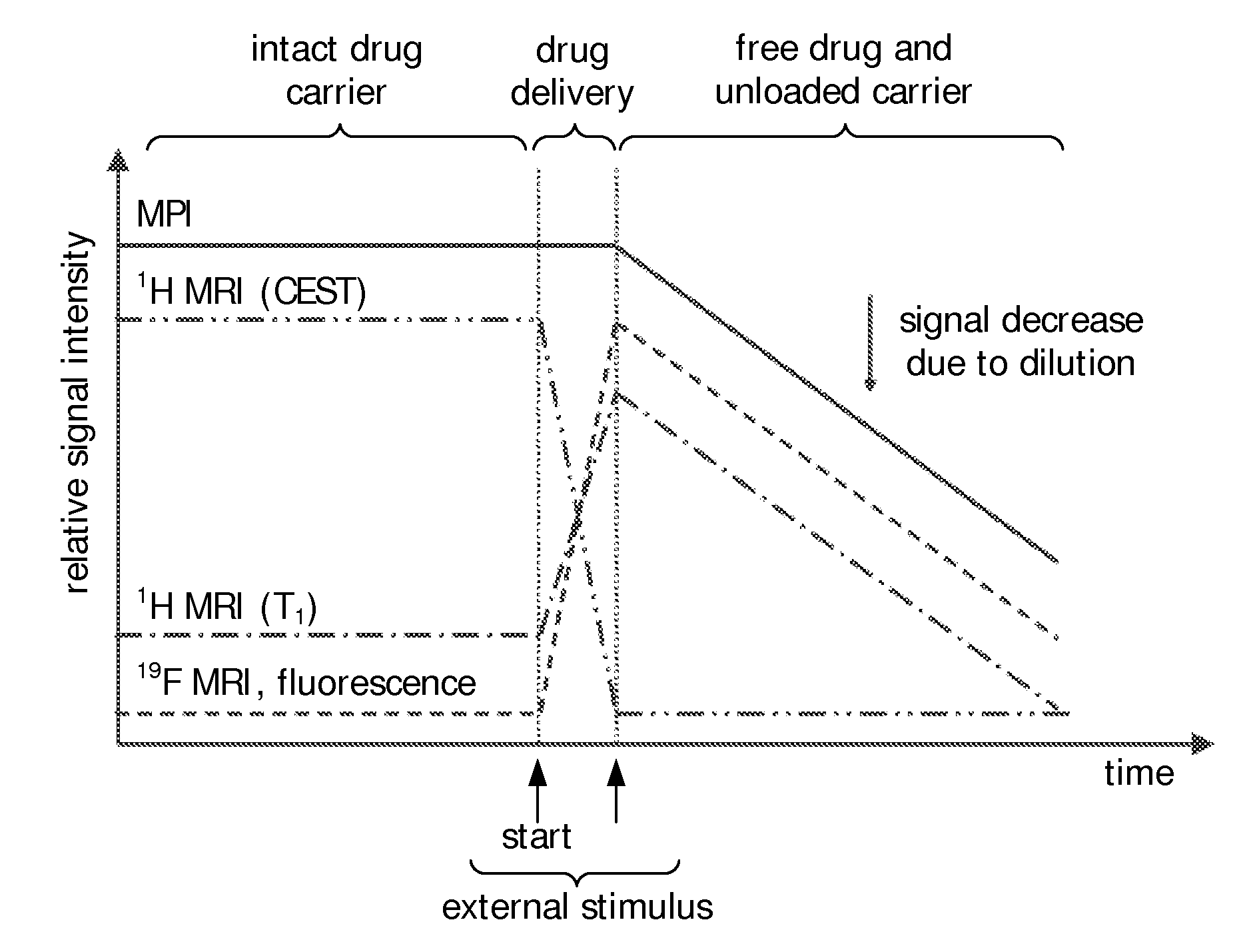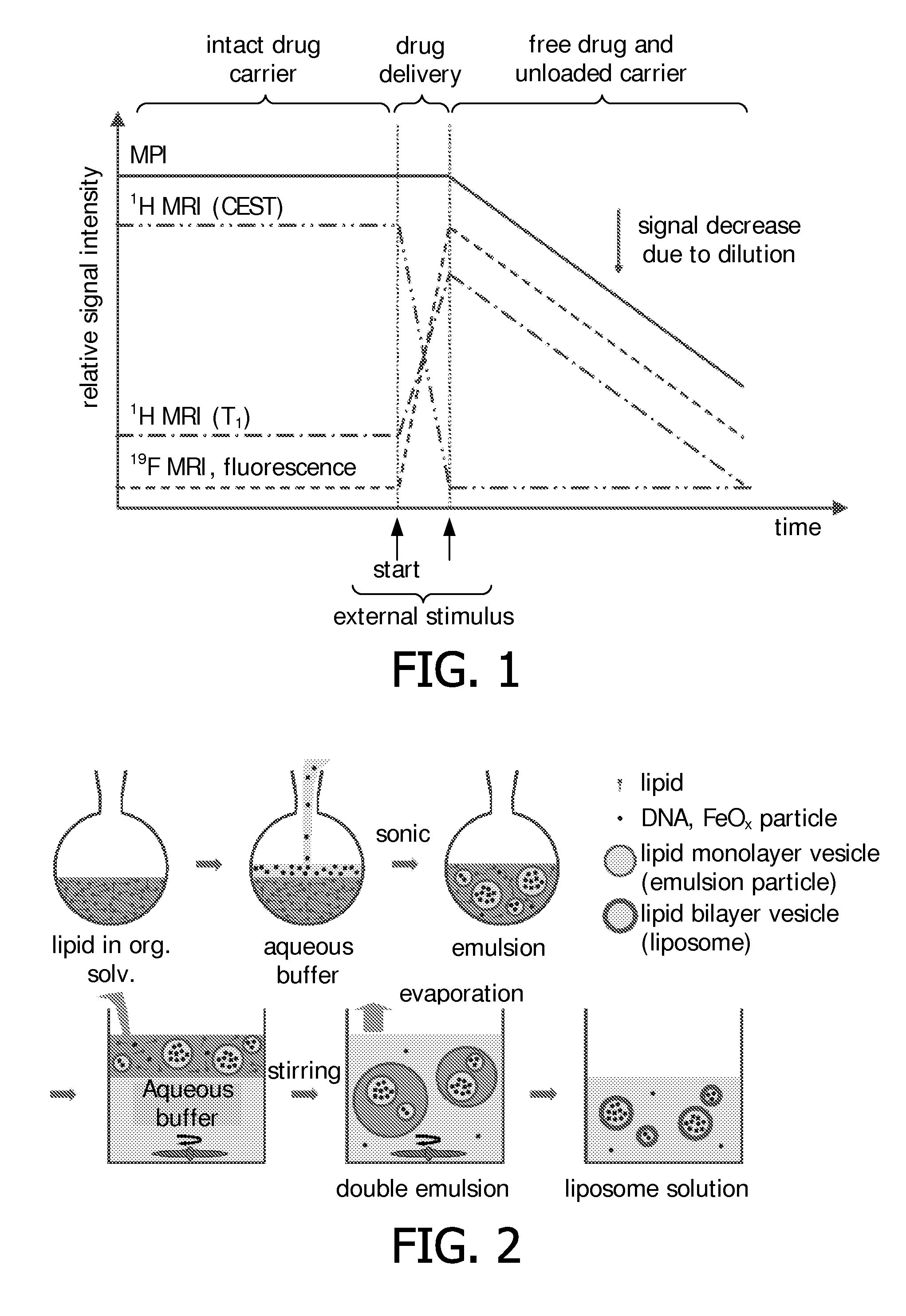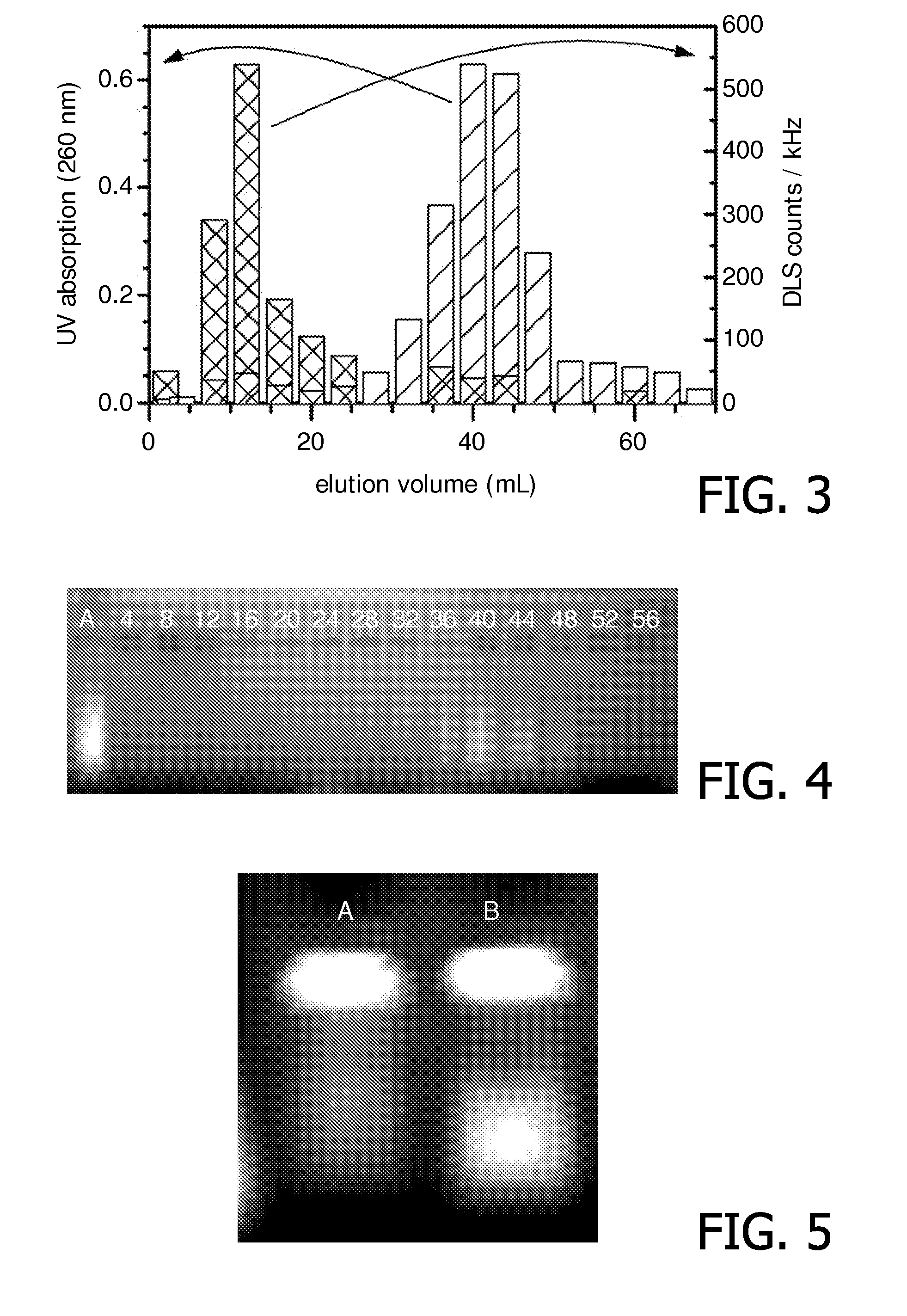Stimuli-responsive carriers for mpi-guided drug delivery
a carrier and stimuli technology, applied in the field of stimuli-responsive carriers for mpi-guided drug delivery, can solve the problems of bringing about, significant side effects for patients, and therapeutic efficiency, and achieve the effect of high sensitivity and resolution
- Summary
- Abstract
- Description
- Claims
- Application Information
AI Technical Summary
Benefits of technology
Problems solved by technology
Method used
Image
Examples
example 1
Preparation of DNA-Loaded Thermosensitive Liposomes
[0152]In a typical preparation of DNA-loaded thermosensitive liposomes 6.3 mg (8.5 μmol) of DPPC, 0.5 mg (1.0 μmol) of MPPC, 1.4 mg (0.5 μmol) of DPPE-PEG2000, and 25 μL of a 1 mg / mL solution of Liss Rhod PE in CHCl3 were dissolved in CHCl3 to obtain 1.0 mL of a CHCl3 solution comprising a 10 mM concentration of lipids. DNA (herring sperm, Sigma-Aldrich) was dissolved in HEPES buffer (135 mM NaCl, 20 mM HEPES, pH 7.40), Resovist stock solution, or a mixture of both. 0.3 mL of the so obtained aqueous solution were mixed with the CHCl3 solution to obtain a 0.3:1 water / oil (W / O) ratio. The constitution of the aqueous phase varied as described in the following Table 1:
TABLE 1Composition of Examples 1-3.c(DNA) / V(DNA) / c(Resovist) / V(Resovist) / nmg / mLmLmMmLlabel*1300.30−−−2300.30−−+3300.150.500.15−*Sample was fluorescently labeled with Liss Rhod PE 0.1% in the lipid composition
[0153]The obtained mixture was sonicated using a QEX 600 sonicati...
example 2
Alternative Preparation of DNA-Loaded Thermosensitive Liposomes
[0157]Liposomes were prepared as in Example 1, with the difference of adding Liss Rhod PE fluorescent lipid (0.1% replacing 0.1% of DPPC) to the lipid composition in order to visualize the presence of liposomes on the agarose gel as outlined above. The chosen initial lipid concentration was 10 mM (CHCl3), and a DNA solution containing 30 mg / mL DNA was used to form the inner water compartment. The obtained purified liposome solution was up-concentrated by a factor of 10 using 100 kDa Amicon centrifugal units.
[0158]Temperature-induced DNA delivery was tested by heating the above solution to 50° C. for 30 minutes. Gel electrophoresis was performed of solution samples before and after heating in order to investigate the efficiency of the release of entrapped DNA (see FIG. 5). Before heating (Line A) only one main spot remained at the origin of the gel and a weak background signal could be detected across the respective line....
example 3
Verification of Drug Release
[0159]DNA / Resovist-loaded liposomes were prepared as described in Example 1 using a mixture of DNA and Resovist in the loading aqueous phase. The chosen initial lipid concentration was 10 mM (CHCl3), and the used inner water compartment contained 15 mg / mL DNA and Resovist (0.25 mM Fe) (see Table 1). After purification, the sample was up-concentrated by a factor of 10 using 100 kDa Amicon centrifugal units.
[0160]The melting phase transition temperature of the liposomal lipid bilayer was determined by means of differential scanning calorimetry (DSC). A sample was subjected to a heating / cooling cycle between 20° C. and 60° C. at a heating and cooling rate of 15° C. / min and the associated heat flow was monitored. From the obtained thermogram (see FIG. 6), the melting phase transition temperature was determined to be 40.8° C. in two subsequent heating cycles, which is in good agreement with the for this lipid composition expected melting phase transition of 41...
PUM
| Property | Measurement | Unit |
|---|---|---|
| Fraction | aaaaa | aaaaa |
| Magnetic moment | aaaaa | aaaaa |
| Temperature | aaaaa | aaaaa |
Abstract
Description
Claims
Application Information
 Login to View More
Login to View More - R&D
- Intellectual Property
- Life Sciences
- Materials
- Tech Scout
- Unparalleled Data Quality
- Higher Quality Content
- 60% Fewer Hallucinations
Browse by: Latest US Patents, China's latest patents, Technical Efficacy Thesaurus, Application Domain, Technology Topic, Popular Technical Reports.
© 2025 PatSnap. All rights reserved.Legal|Privacy policy|Modern Slavery Act Transparency Statement|Sitemap|About US| Contact US: help@patsnap.com



